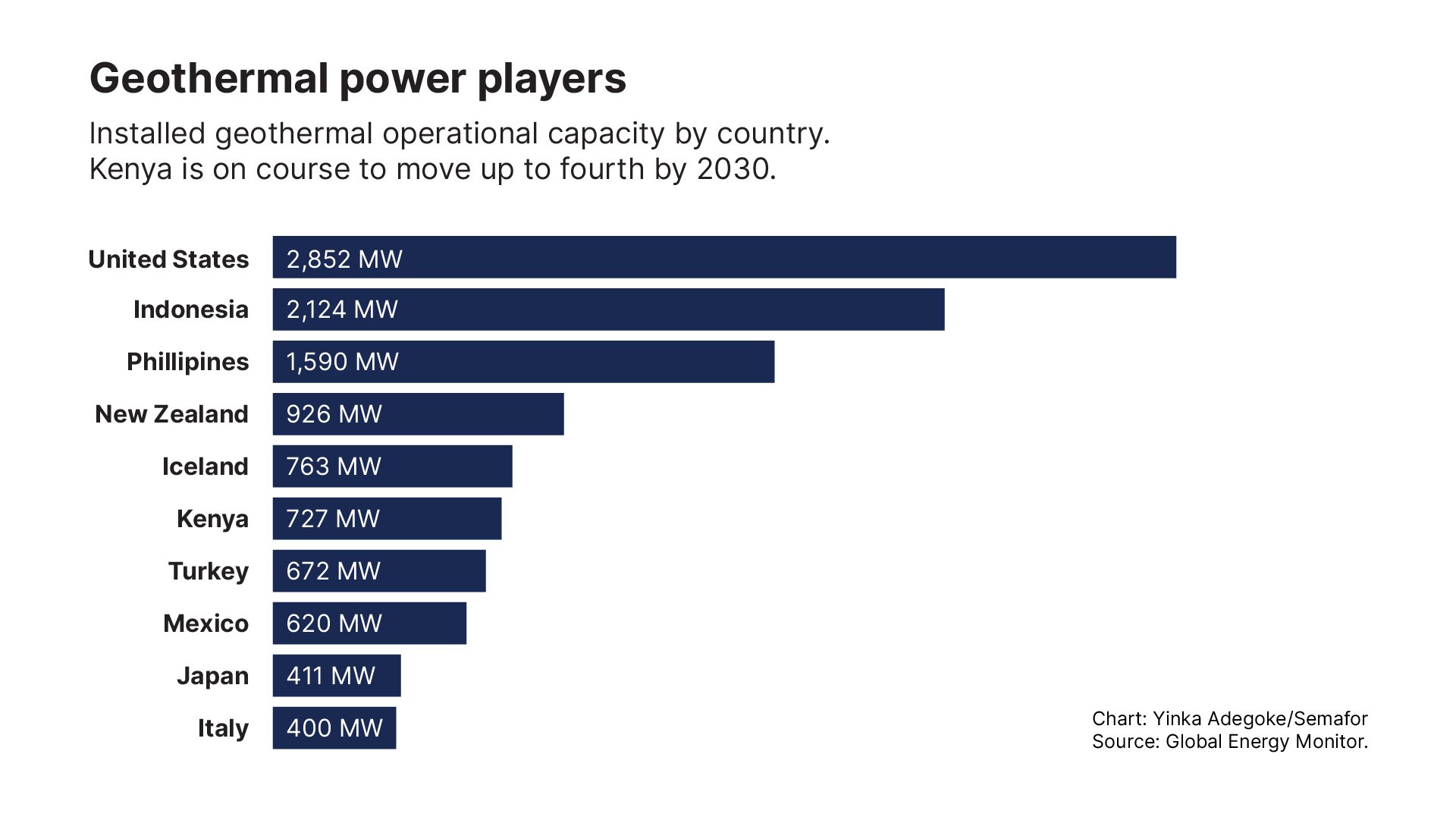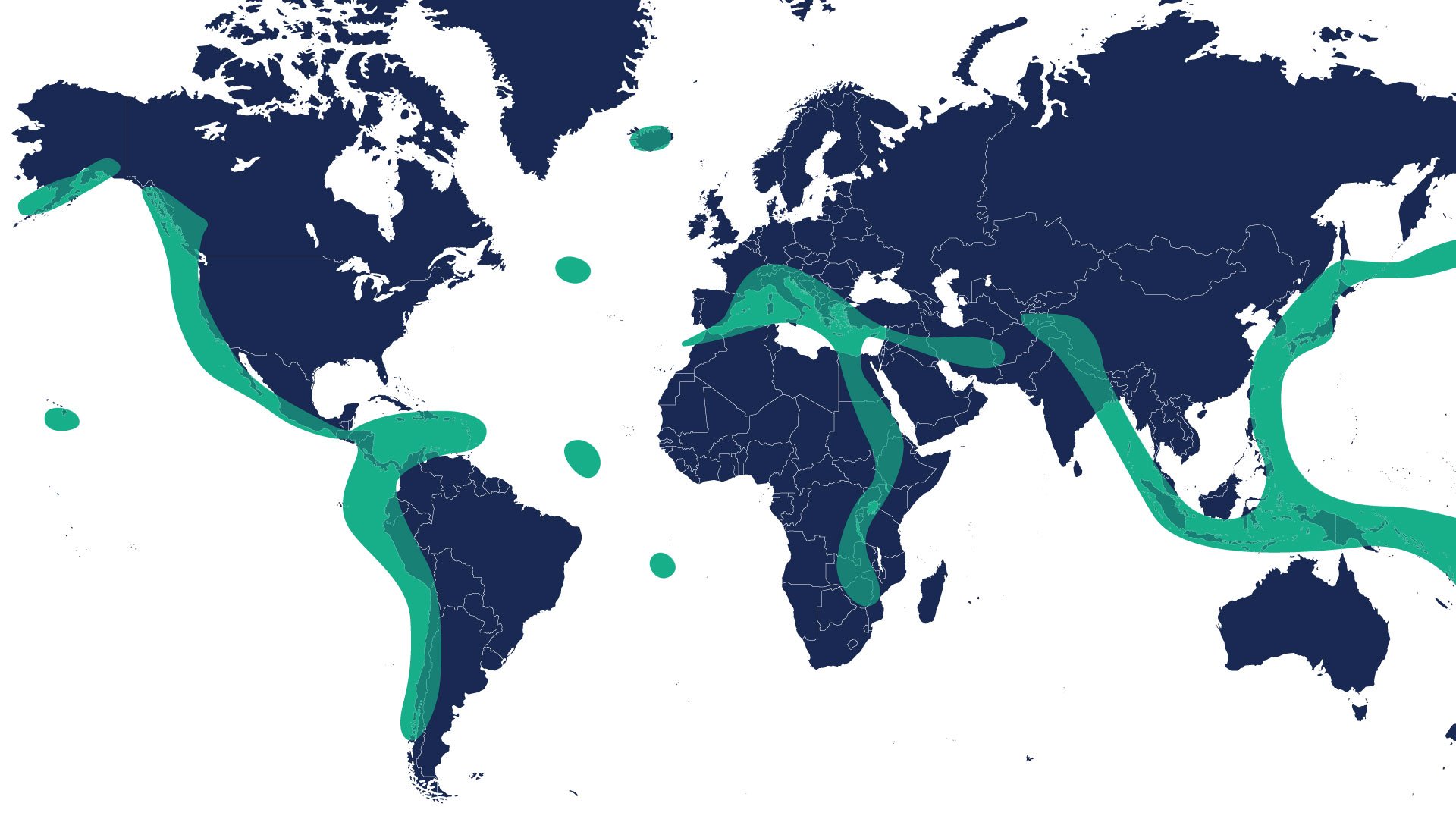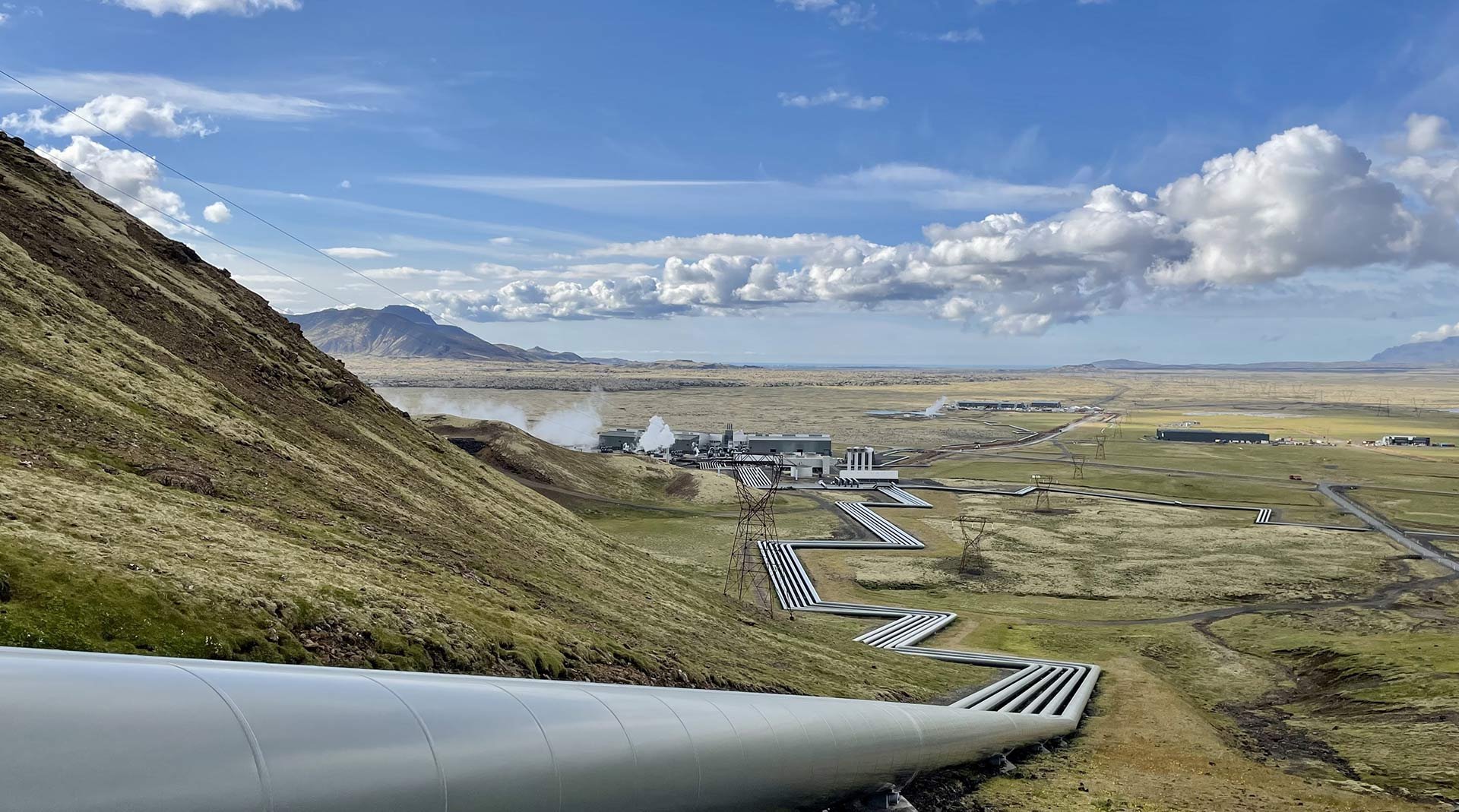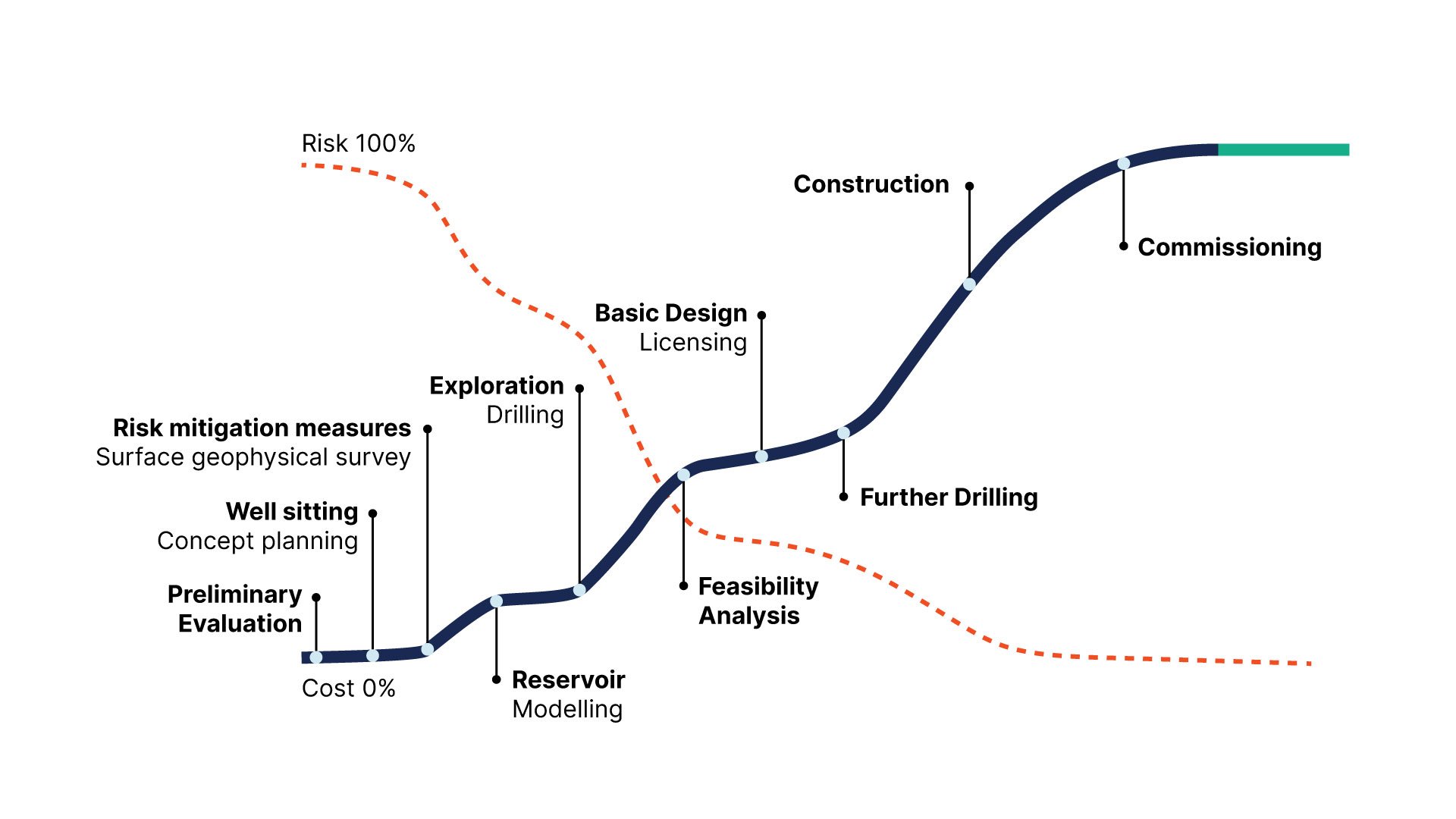Something’s rumbling underneath: the opportunities of geothermal energy
11.12.2023
Amid all the wonders of Iceland – the silver waterfalls and powerful geysers, the black sand beaches and the vast green tundra – the island’s ability to heat more than 90 per cent of its homes using geothermal energy is one of the most impressive from an engineer’s perspective.
Geothermal energy has a low carbon footprint and simply never runs out – or at least not as long as the Earth is here. It is reliable and consistent baseload energy: There is no need to wait for the sun to shine or the wind to blow. There are no troublesome imports and exports laden with price shocks and political disputes. Finally, geothermal energy is silent and unobtrusive. It does not disrupt the local landscape, as do energy sources that require extensive mining.

Nesjavellir geothermal heat and power plant
Since the Viking days, Iceland has been using geothermal energy in some form for heating and bathing. In addition to heating most of its homes with the Earth’s warmth, the country also generates 27 per cent of its electricity from geothermal sources.
“Geothermal energy has a great potential for direct utilisation, such as district heating and cooling,” says Kristín Steinunnardóttir, a mechanical engineer and project manager at Mannvit, an Icelandic company with strong competencies in the geothermal field that COWI recently acquired.
In low- to medium-temperature geothermal areas, electricity is a less practical application, but there are still some high-temperature areas with a great potential for producing electricity that haven’t been utilised.
Geothermal hot spots – literally!
California, Italy, Mexico and the Philippines have had thriving geothermal fields for decades, providing heating, cooling and electric power. Kenya, Turkey and Indonesia have shown impressive growth in geothermal usage in recent years.


Green markings indicate geothermal fields globally
But is geothermal energy a growth option for other parts of the world? And can engineers with experience in oil and gas extraction re-train towards the geothermal future? Can shale techniques be repurposed for geothermal energy?
Exploiting existing fractures
Getting to geothermal energy requires extensive drilling and production operations, and some of the knowledge previously used in oil and gas fracking is applicable. However, geothermal generally exploits existing fractures instead of creating new ones. These advanced approaches are called enhanced geothermal systems, or EGS.
One type of EGS is a cutting-edge technology known as closed-loop geothermal, which allows water to circulate through the fractures, absorb heat and return to the surface as hot water. The water is injected down, re-heated and pumped back up again.
As exciting as EGSs are, there are still many opportunities all over the world for building conventional geothermal projects.

Hellisheiði geothermal heat and power plant
Be careful not to trigger an earthquake
Geothermal energy is to some degree a sustainable and environmentally friendly energy source, although it has a few risks. In some cases, underground greenhouse gasses are released as geothermal energy is used, although overall emissions from geothermal energy are much lower than those associated with traditional fossil fuels.
In addition, some aspects of the geothermal process – in particular, the re-injection of the geothermal fluids through injection wells – run the risk of triggering earthquakes.
This leads to a dilemma: It is better to drill further away from population centres, yet population centres can benefit most from district heating and cooling, which are the most efficient uses of geothermal energy.
Explorations are costly …
The price of exploration is the Achilles' heel of geothermal energy.
“Geothermal has a high risk rate compared to other renewables because you don’t really know what you’re going to get before you have drilled some exploration wells,” Kristín Steinunnardóttir says.
You usually have to drill two to three exploration wells to know how much potential an area has, and each well can cost up to three or four million euros. You need a lot of financing up front.

Risk vs. cost for a large-scale geothermal project.
Development banks are usually needed to finance project explorations in less-wealthy countries. In the US, the US military is financing projects in Texas, and the US government recently included geothermal energy in the round of Clean Electricity Production Tax Credits slated to begin in 2024, although the extensive environmental reviews required in the US often slow projects on federal land.